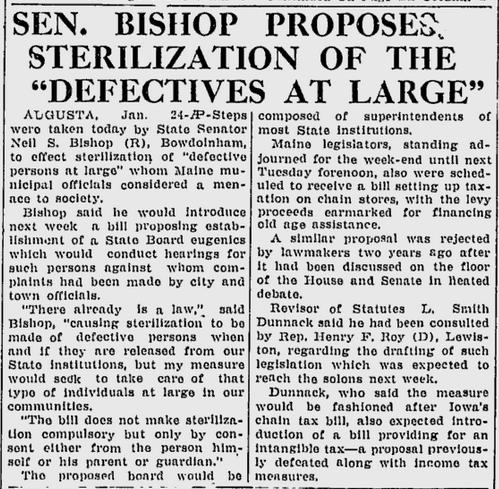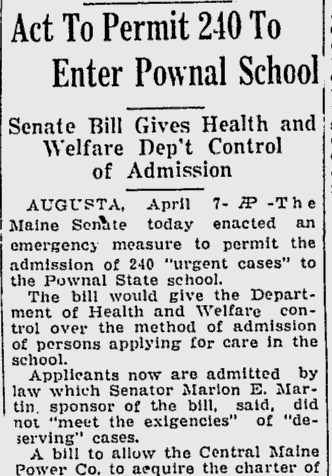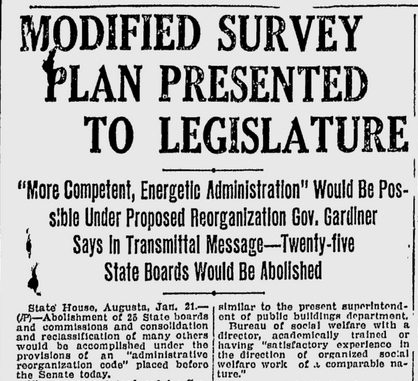This bill allowed municipalities to raise funds for “the education of teachers to meet the education needs of mentally retarded children”, and pledging matching funds from the State.
The Maine Legislature, as such bodies are wont to do when faced with intractable systemic problems, on the recommendation of the Legislative Research Committee in 1955 created a Governor’s advisory committee to study the issue - the Maine Committee on Problems of the Mentally Retarded.
While still segregated from their non-disabled peers, this law opened up opportunities to children with developmental disabilities.
Governor Hildreth signed into law a bill creating the Division of Special Education for Physically Handicapped Children under the Maine Education Department. While it only provided for children with physical disabilities and the “special” classes were separate from their “normal” peers, this bill was a step towards providing an education for every children regardless of disability.
While the patient population would peak in the 1930s at around 1,500, Superintendent Kupelian would continue to advocate for expanding the numbers of residents - asking the public to support funding for up to 9,000 total patients.
Residents of Pownal State School were allowed to be granted the right for a temporary “leave”.

In 1941, a bill came before the legislature to create a “State Board of Eugenics”, which would allow for involuntary sterilizations of “defectives” not residing in institutions.

While changes were being made to the administrative structures of Maine’s institutions, the Pownal State School was undergoing an expansion as well. An increase in beds and buildings was championed by a new superintendent, Dr. Stephen E. Vosburgh, who was hired in 1919 and served for 18 years.

Alongside the growth of centralized institutional care for people with disabilities, the early 30s brought a parallel consolidation of governmental administration under the executive branch, including the creation of the Department of Health and Welfare.
A new bill on sterilization was signed into law. This law made it easier to recommend these procedures for residents of institutions like Pineland, and coerce people with developmental disabilities, most of them women, to be sterilized.
